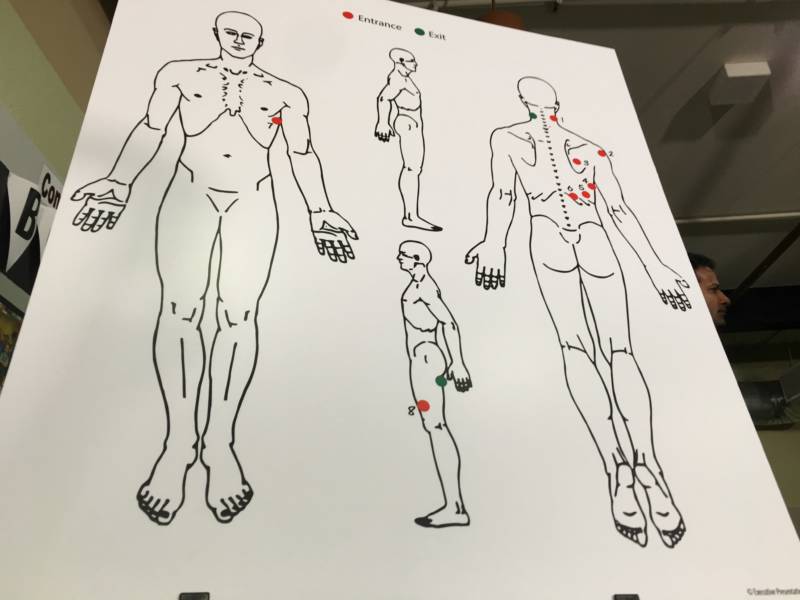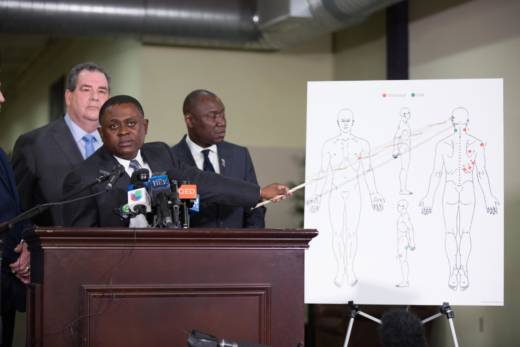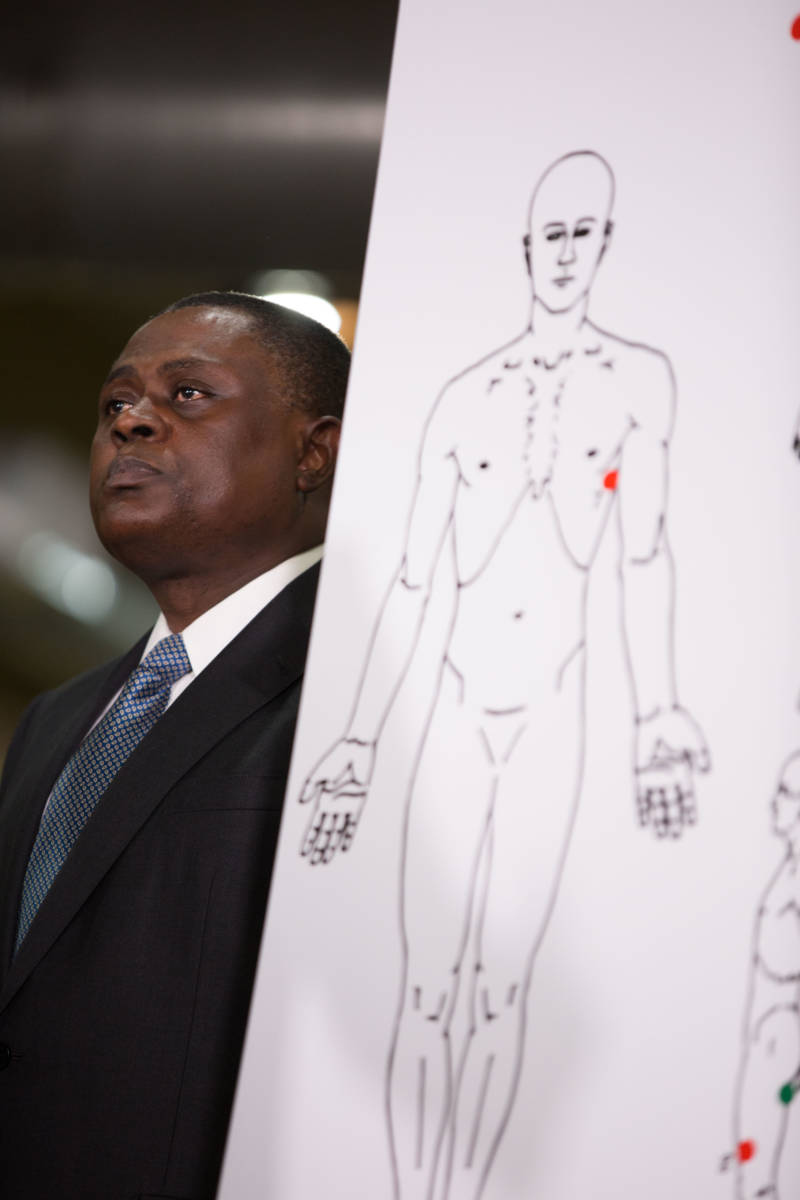Clark, a 22-year-old African-American man and the father of two small children, was shot in his grandparents’ South Sacramento backyard by two police officers responding to a report of someone breaking car windows in the neighborhood.
The officers were guided by a Sacramento County sheriff's helicopter as they chased Clark. One officer can be heard on body-camera video shouting, “Show me your hands! ... Gun, gun, gun!” immediately before the shooting began. Video taken from the helicopter shows most of the shots were fired after Clark collapsed to the ground face down. No weapon was found with Clark’s body -- only a cellphone.
Omalu, a forensic pathologist renowned for his discovery of a concussion-related brain disease in football players, said the first thing he noticed when he examined Clark’s body was that there were no fatal wounds on the front of the body. Omalu said he believes that shows that Clark was moving away from police when they fired.
The videos appear to show Clark advancing toward the officers before they fired, but Omalu dismissed the theory that he had faced or advanced toward the police with his phone outstretched in his hand.
“The proposition that has been presented that he [Clark] was assailing the officers -- meaning he was facing the officers -- is inconsistent with the prevailing forensic evidence as documented at autopsy,” Omalu said.
Generally, forensic pathologists cannot determine the order that bullets struck a body.
But based on the trajectory of the bullet wounds, Omalu presented a theory.
Turning his back to reporters, he said Clark was facing toward his grandparents' sliding glass door with his left side exposed to the officers when the first bullet hit him in the back of his left side.
Omalu then rotated clockwise, demonstrating that Clark could have then similarly turned and exposed his upper right back to the gunfire. Clark may have kept rotating, exposing him to the next bullet that shot through his neck from right to left.
Lastly, Omalu said Clark collapsed face down, with his head toward the officers. The bullet that pierced his left leg may have been the final one, Omalu said, and it could have struck Clark before or after he fell.
Omalu said Clark was likely still alive immediately after the volley of bullets, and perhaps alive when officers called out to ask if he was still armed.
“When you’re unresponsive that doesn’t mean you're dead,” Omalu said. “He didn’t die instantaneously. He died from blood loss. His middle vessel aorta was hit.”



